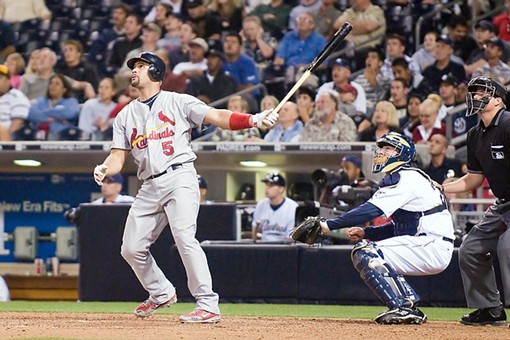Like McGwire's famed "Band-Aid" blast at the old ballpark or Mickey Mantle's legendary dent on the upper-deck façade at Yankee Stadium, El Hombre's Herculean homer left a mark for all to see: He broke the light that illuminates the "I" in Big Mac Land, a feat the Post-Dispatch's Derrick Goold aptly dubbed "I-popping."
(If you missed it, click here for the highlight.) Update: Annie has the photographic evidence up on the Daily RFT.
But inquiring minds want to know: How far did it really fly?
The fantastic site Hit Tracker uses a few complex formulas to estimate the distance and speed off the bat of every home run hit in MLB.
According to their calculations, Pujols' shot last night traveled 419 feet and left the bat at a whopping 110 mph.
Amazingly, Pujols line drive last night wasn't even close to his longest of the season. He's hit six homers that traveled farther in 2009. The longest was a 459-foot moon shot that left the bat at 113 mph.
What team were the Redbirds facing at the time? None other than the Cubbies, whom they defeated 8-2.





![No One Answered 911, So St. Louis Moms Swung Into Action [VIDEO]](https://media1.riverfronttimes.com/riverfronttimes/imager/new-headline/u/golden-s/40907300/dumpster169.jpg?cb=1709161593)
